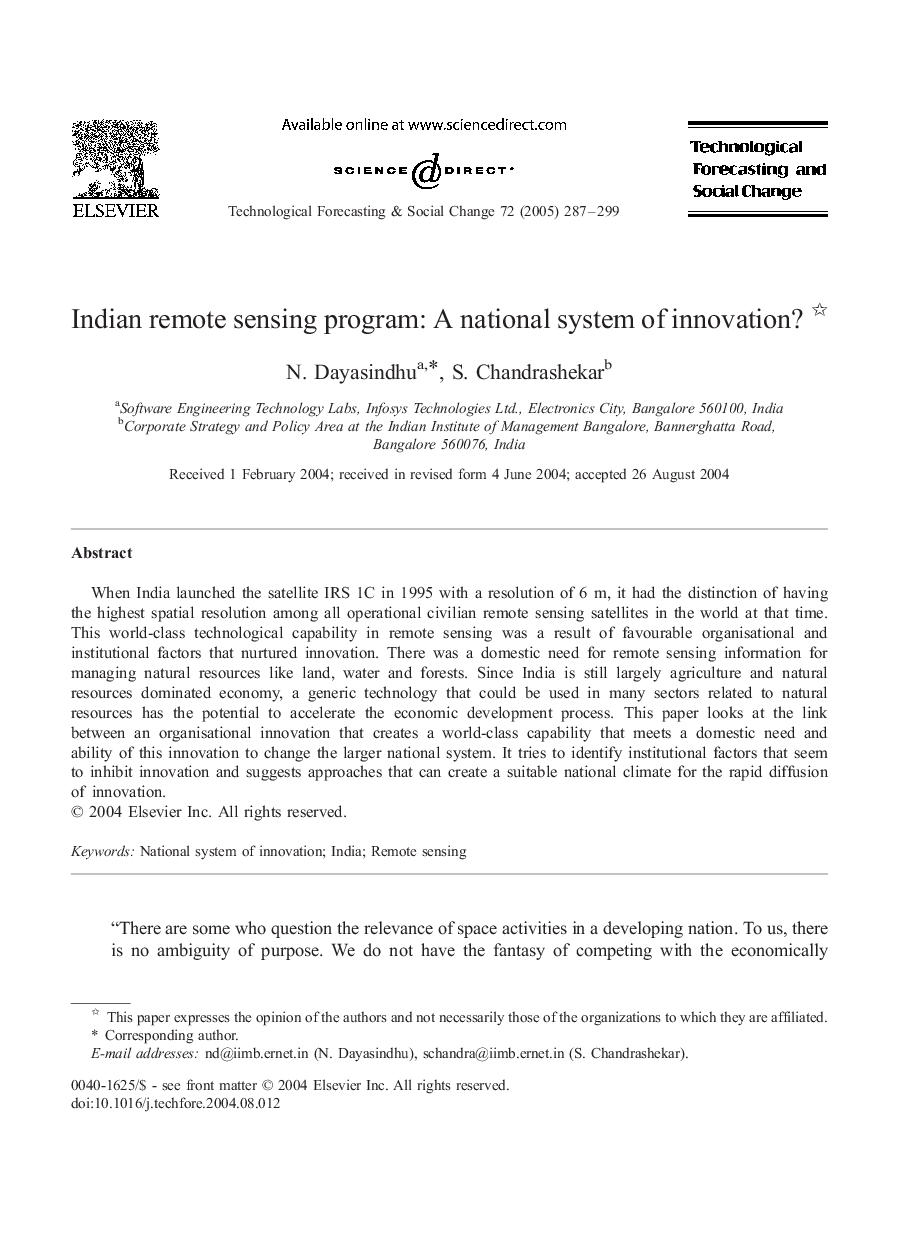| Article ID | Journal | Published Year | Pages | File Type |
|---|---|---|---|---|
| 10442631 | Technological Forecasting and Social Change | 2005 | 13 Pages |
Abstract
When India launched the satellite IRS 1C in 1995 with a resolution of 6 m, it had the distinction of having the highest spatial resolution among all operational civilian remote sensing satellites in the world at that time. This world-class technological capability in remote sensing was a result of favourable organisational and institutional factors that nurtured innovation. There was a domestic need for remote sensing information for managing natural resources like land, water and forests. Since India is still largely agriculture and natural resources dominated economy, a generic technology that could be used in many sectors related to natural resources has the potential to accelerate the economic development process. This paper looks at the link between an organisational innovation that creates a world-class capability that meets a domestic need and ability of this innovation to change the larger national system. It tries to identify institutional factors that seem to inhibit innovation and suggests approaches that can create a suitable national climate for the rapid diffusion of innovation.
Related Topics
Social Sciences and Humanities
Business, Management and Accounting
Business and International Management
Authors
N. Dayasindhu, S. Chandrashekar,
